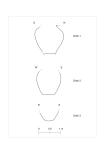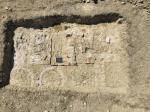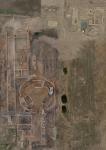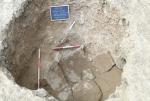Summary (English)
The 2022 excavations concentrated on five areas: 5900, 14000, 14100, 14200, 14300.
Excavations in area 5900, the only one in the southern part of the site, continued in order to gain an understanding of the sector explored from 2009 onwards (5000 east) and characterised by the presence of middens containing material associated with early medieval recycling activities, in particular that of glass.
Here, the excavation of room 6 continued, a small room open to the west in which there were the remains of the floor make-up. Like the nearby rooms 3, 4, and 5 in area 5000 east, room 6 presented a large pit in its north-west corner, in this case used for dumping building materials from the villa, which at this point had been stripped.In Area 14000, work continued in the southern zone (room δ), in order to complete the 2019-2021 excavations. Here, a production area was uncovered, with pits and hearths, which was similar to other areas of the site relating to the phase when workshops functioned here (6th-7th century A.D.).
Work also continued in area 14100, situated in the eastern sector of the large room (β) with six pillars, characterised by a rough floor make-up that extended over most of it. The pottery found in the layers of fill inside the three sunken dolia, found during the 2019-2021 campaigns, suggest they probably went out of use from the 6th century A.D. onwards. Two small trenches were opened to investigate the different methods of housing the dolia in the ground.
New areas 14200 and 14300, aimed to continue the investigation of the westernmost part of room β, to date the largest room on the site: these new areas revealed its overall extension to be c. 180 m2.
The first of the two areas presented, in addition to the continuation of the floor make-up, a very deep pit containing dumped building rubble and, on the bottom, a fragmented dolium.
In area 14300, a row of sunken dolia situated in the south-west corner of room β confirmed that this room was used for storage purposes and can be provisionally identified, through comparison with similar rooms in late antique villas, as a cella vinaria. Further excavation should confirm this suggestion.
- Sara Lenzi
Director
- Marco Cavalieri, UCLouvain
Team
- Agnese Lodi - Collaboratrice esterna UCLouvain
- Anthony Peeters - UCLouvain
- Gloriana Pace - Collaboratrice esterna UCLouvain
- Sarah Vyverman - UCLouvain-ENS
- Hugo Lambert, Pauline Mauriello, Aymeric Piteüs New, Alexandre Simon - UCLouvain
- Alessandro Novellini – collaboratore esterno UCLouvain
Research Body
- Université catholique de Louvain (UCLouvain)
Funding Body
- FNRS - Crédit de recherche (CDR)
- FNRS - Equipement (EQP)
- Prix Clio pour l'archéologie





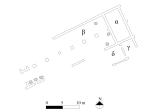
![Download [PDF]](/excavation/skins/fasti/images/results/download_sml.png)
